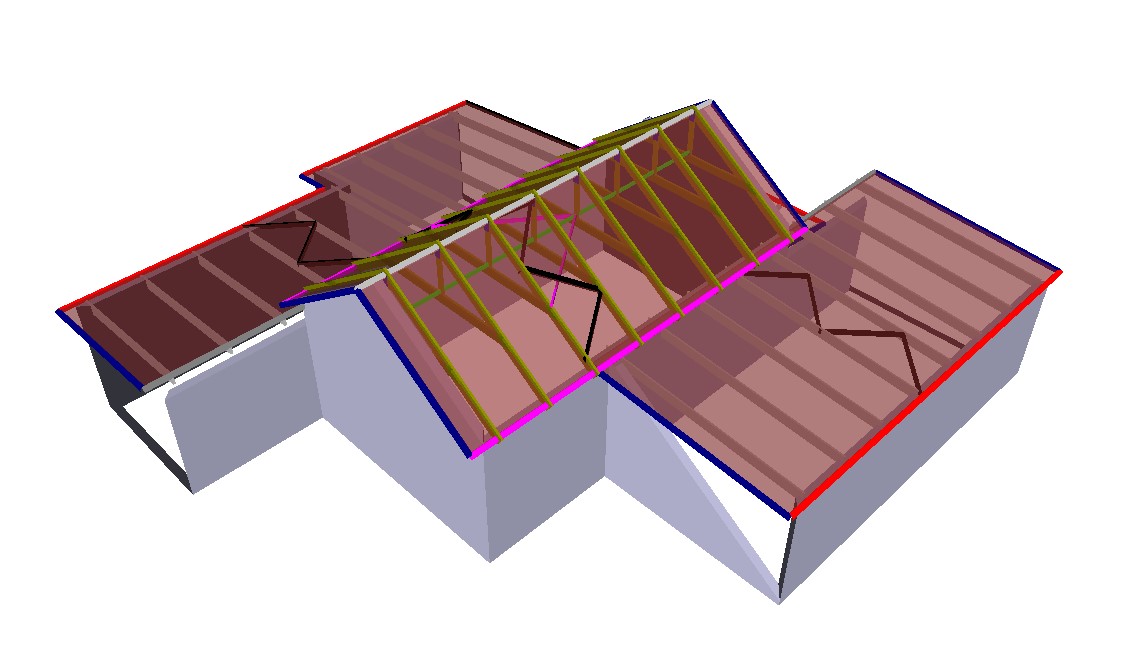Bracing plays an extremely important role in the stabilization of your roof structure. It is divided, but not limited to 3 main section, which is Top Chord Bracing, Bottom Chord Bracing and Web Bracing.
Top Chord Bracing
- This bracing method add stability to the top chord, which help to prevent the top chord from buckling. The battens ( cement tile roof ) and purlins ( sheeted roof ) act as runners on top of the top chord. The top chord bracing is fixed to the bottom or top of the top chord at a 45deg angle. This creates a triangle between the runners and bracing, which prevents the top chord from buckling.
Bottom Chord Bracing
- This bracing method add stability to the bottom chord, which help to prevent the bottom chord from buckling when in compression. Since there are no battens or purlins fixed to the bottom chord you have to install bottom chord runners. Even though ceiling brandering can act as bottom chord runners it is not advised to do that, because the ceiling brandering is not a continuous piece of timber, but is split either side of internal walls. therefore bottom chord runners are installed on top of the bottom chord at approximately 2.6m apart ( this may differ and is design dependent ). The bottom chord bracing is then installed on top of the bottom chord at 45deg angles between the runners, creating like a zig-zag effect.
Web Bracing
- This bracing method add stability to the webs. Web bracing is design dependent and is not required for all designs. The purpose of web bracing, as with all the other bracing, is to reduce the effective length of the member. A web is braced with the same method as the other chords, which consist of a runner and a cross brace member. In most instances only one runner is required, which is nailed to the center of the web and run over all the trusses as long as the webs are in line. Cross bracing is then installed to the other side of the chord at a 45deg angle.
